Shooting For Survival: Are Your Heroes Properly Trained?
Ready on the left? Ready on the right? Ready on the firing line. Commence firing!
Those words, or something similar, are heard by officers all over the country as they attend their annual mandated firearms qualification. Yes, at least once or twice each year all officers receive word to report to the range to qualify with their duty weapons.
Many officers, for the first time since the last mandatory qualification, pull out their handy-dandy gun cleaning kits to spruce up their sidearms. Then, with pistols all clean, shiny, and properly oiled, a few begin to feel a bit of anxiety creeping up. Suppose I don’t qualify? What happens if my scores aren’t high enough? You know, my eyesight is a bit weaker since last year. What if I miss the entire target? Will I lose my job?
Well, those are worries that should never arise because officers should be required, or at least encouraged to shoot more often. Practice by repetition is the key to firearms proficiency. Budget woes should never affect or stand in the way of an officer’s ability to defend himself/herself.
However, ammunition and training time are often one of the first things to go when funds grow tight. But that’s the way it is and that’s the way it’ll probably remain. So cops deal with what they have, which sometimes isn’t much.
Firearms In-Service Training
Some departments do little more than have their officers line up on the range, wait for the command to fire, and then blast away at stationary paper targets, hoping they’ll punch enough holes in them so they can pass the minimum qualification requirements. Then they call it quits until the next year. Short, sweet, and cheap. But is that enough to survive in today’s increasingly dangerous world? No, it’s not.
How Many and What Kind of Attacks?
Each year the FBI collects data regarding the number of law enforcement officers who were assaulted during that particular 12-month period. For example, In 2018, from the 546,247 officers working for a total of 11,788 law enforcement agencies across the U.S., a whopping 58,866 officers were assaulted while performing their duties. To break it down a bit further, that’s 10.8 officers assaulted per 100 sworn officers.
Attacks With Injuries Received
- 24.7 percent of the officers who received injuries in 2018 were attacked with hands, fists, or feet (personal weapons).
- 8.4 percent of the officers were attacked by persons wielding knives or other edged weapons.
- 6.1 percent of officers were attacked with firearms.
- 16.0 percent of the attacks on officers who were carried out by subjects using weapons other than those listed above.
In the years from 2009-2018, 9,857 were injured by edged weapons, 439,719 by personal weapons, and 80,692 were injured by suspects who used “other” dangerous weapons to carry out attacks. During the same time period 21,954 officers were injured by firearms.
Many of the over 21,000 officers who were victims of firearm attacks were killed during shootouts with armed suspects, NOT in gun battles with stationary paper targets.
Now, I’m not saying those officers weren’t properly trained. Nor am I suggesting they didn’t respond appropriately to the threats to their lives. Not at all. Sometimes you do everything right and the worst still happens. What I am offering is that there are numerous techniques and tactics that could and should be taught to each and every officer. Things that could help them in the field.
Classroom time is great, and necessary, and goodness knows there’s a mountain of wonderful books and research material available.
Police Procedure and Investigation, A Guide for Writers, is a how-to, behind the scenes book designed especially for writers. The book can be found in public schools and university libraries all across the world, on the shelves and desks of thousands of writers, including many top, bestselling authors, on the nightstands of fans of police TV shows and people who’re interested in learning about police officers and procedures, in police departments, police academies, and more.
Book “learnin'” is great, however, it’s a must to incorporate hands-on exercises into police training whenever possible. This is also why the Writers’ Police Academy came into being—so that writers can experience the same training as what’s offered to and required of police officers and investigators.
International bestselling author Tami Hoag, Writers’ Police Academy 2016.
As I stated earlier, officers learn some skills best through repetition, and it’s the “over and over again” training that helps officers learn to react almost instinctively to various threats and situations. Then, when/if those events present themselves, officers will revert to their training and react appropriately.
Therefore, it is an absolute must that officers spend at least some time training under “threat” situations. After all, suspects on the street are simply not going to stand perfectly still with their hands hanging at their sides so that officers can squeeze off 50 or 60 rounds at them. So why should officers train as if they’re going to someday face a one-dimensional faceless paper bank robber?
Believe me, facing a live person who’s shooting at you is far different than shooting at an ink-blotted paper rectangle. Everything changes when a human suspect pulls the trigger, sending a bullet toward your head. Your brain has to suddenly shift from “it’s only a paper target (paper-man, or flat-man, syndrome)” to HOLY S**T HE’S TRYING TO KILL ME! mode.
Sure, some practicing with stationary targets is necessary. That’s how cops learn the basics. But what else could they do to better prepare themselves for the real bad guys?
Karin Slaughter, Writers’ Police Academy 2015 – Firearms Simulator Training
1. Shoot in low light situations. Not all firefights are going to happen at noon. In fact, many, if not most shooting situations occur at night. So why practice all shooting in the bright sunshine? And practice shooting while holding a flashlight!
2. Tactical reloading. Spend lots of time practicing reloading while under fire (pretend of course). When performing reloading drills, officers should practice discarding/dropping the empty magazine. You do not want your hands full, trying to reload while bullets zip by your head. However, when/if possible, shooters should place the empty magazine where it’s easily accessible for future reloading, if necessary.
3. Practice shooting while using various objects as cover. The practice will then come naturally when in the field. Always use cover!
4. Officers should always face their target (never turn their backs on the shooter!). However, some departments have the officers first shoot from closer ranges (5 or 7 yards), and then when they’re finished at that distance they turn around and casually walk back to the next firing point. NO! They should back up to the next point. This instills the habit of always facing their aggressor.
5. Strong and weak hand shooting. Always, always, always practice shooting with either hand. The possibility of entering into a firefight with an injured strong hand is always a possibility. If it does, officers certainly want to be able to at least hold, point, and shoot their firearms with some degree of accuracy.
6. Practice shooting at moving targets. Bad guys do not stand still. Neither do cops when they’re in a firefight. So why always practice shooting at stationary objects? I cannot stress this point enough.
7. Spend time on firearms training simulators. Simulators are great tools for preparing officers for real-life scenarios. They’re also great for pointing out weaknesses in stressful situations. I’d rather correct my errors in a classroom, not after I’ve caught a couple of rounds to my torso.
Firearms simulations training, Writers’ Police Academy 2010.
International bestselling author Lee Child and, to his left, world-renowned forensic anthropologist Elizabeth Murray—firearms simulator training, Writers’ Police Academy 2012. Th shooter to Lee’s right is Dr. Murray’s sister.
Finally, and this is to the officers out there, practice, practice, practice. Repetition, repetition, repetition! What you do during training is what you’ll do on the street. I guarantee it. So even if your department doesn’t offer extra time on the range, you do what it takes to find somewhere to practice shooting. Your life may soon depend on your ability to use your weapon effectively.
Be safe! Your lives matter to a lot of people.

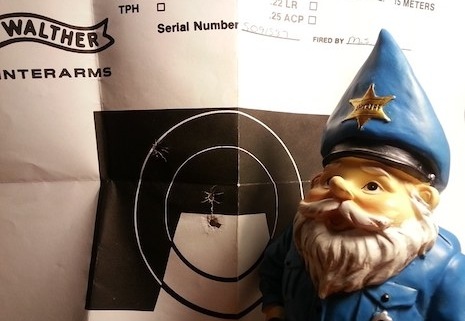

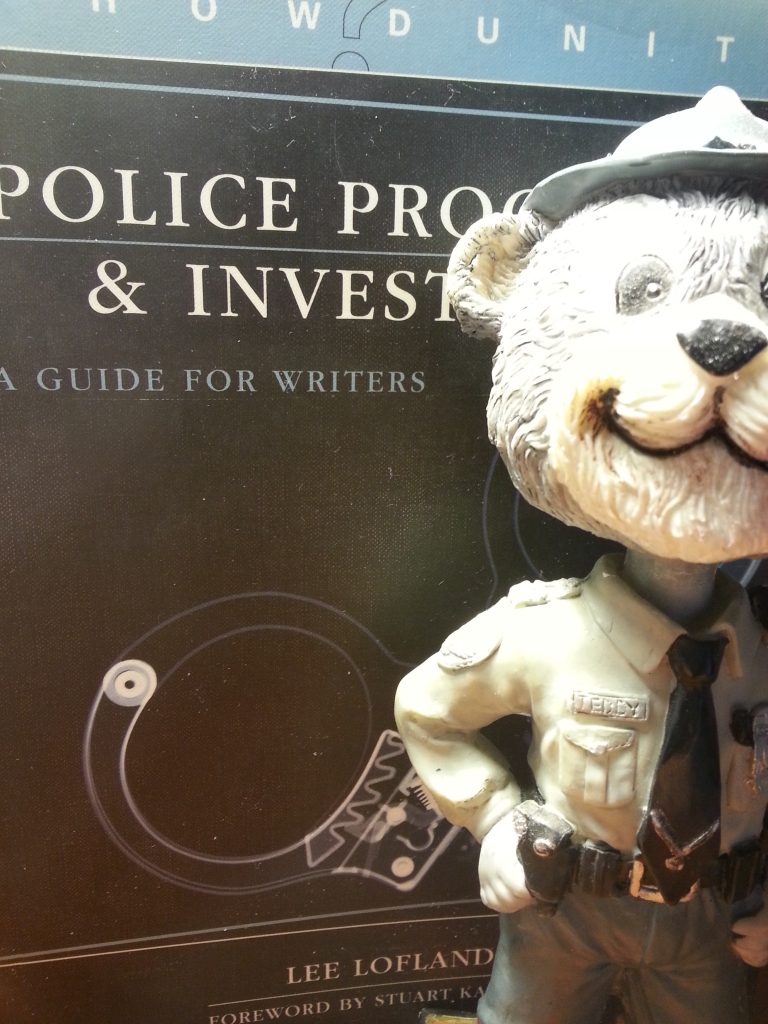
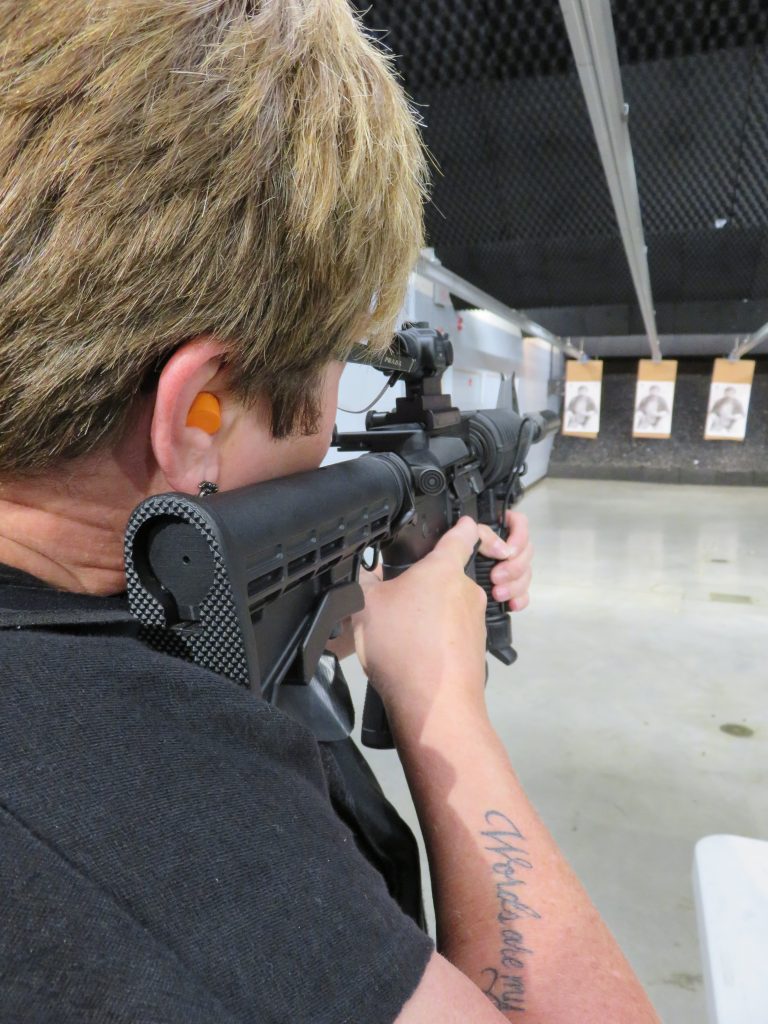
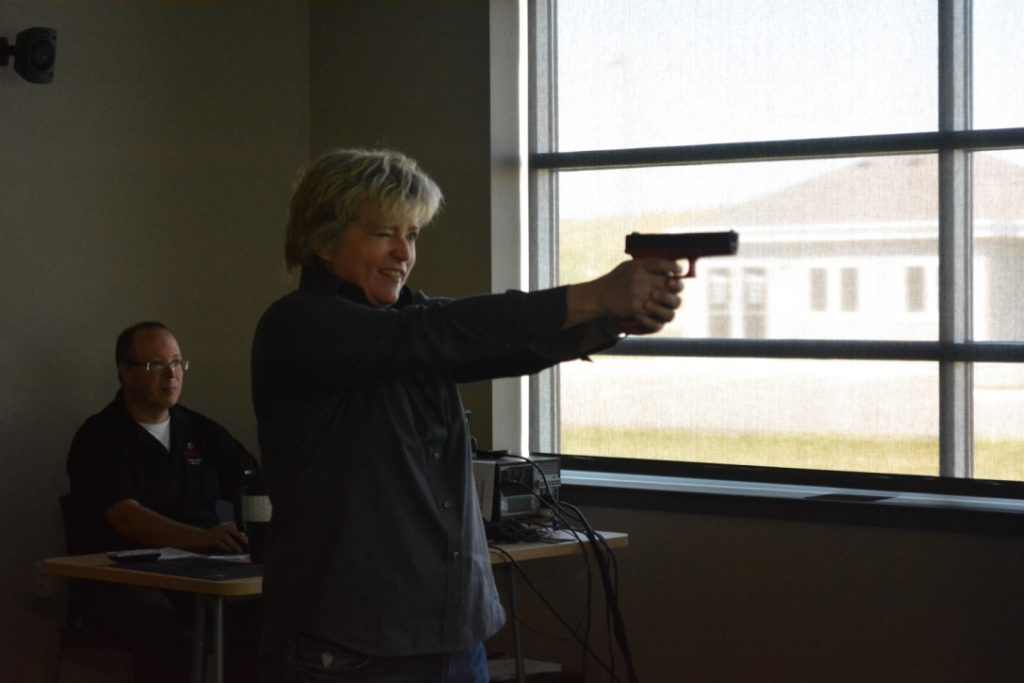
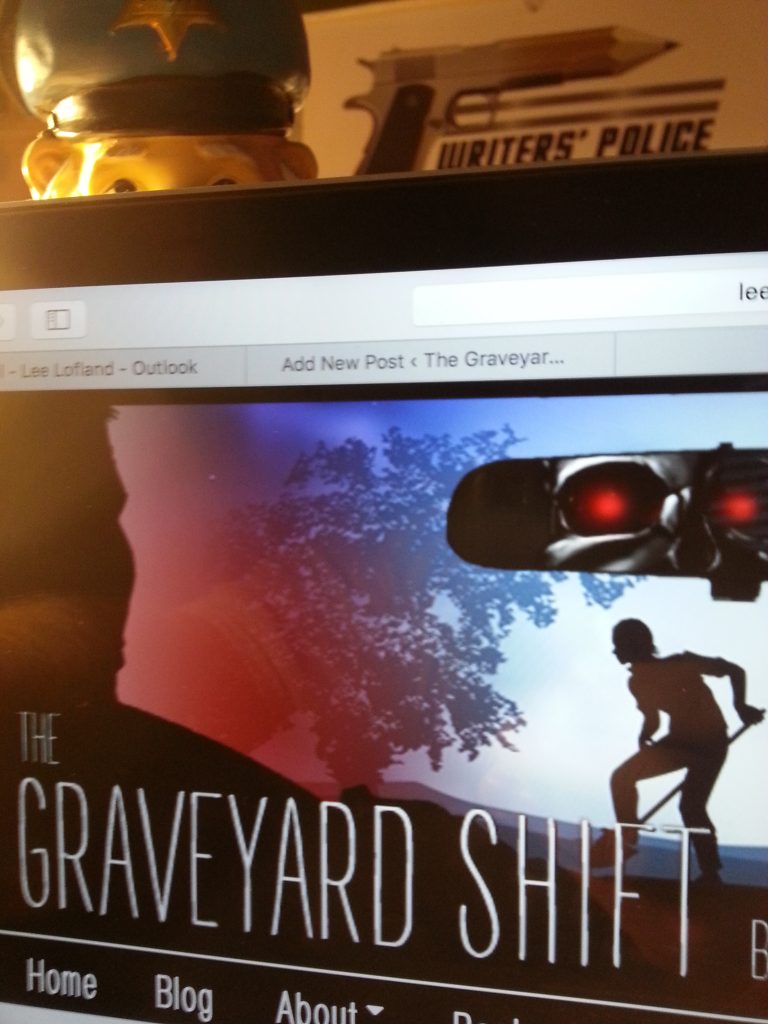


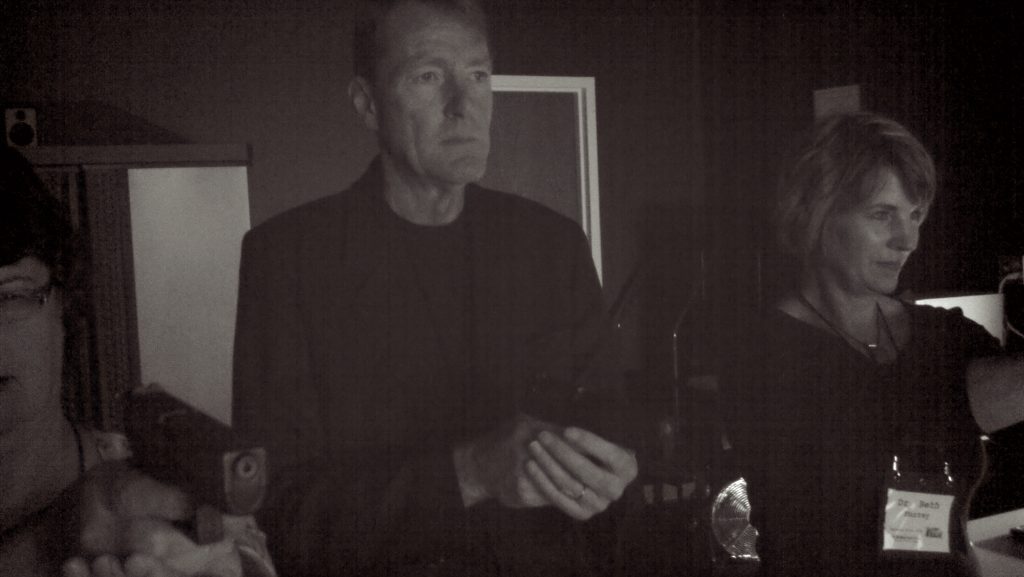

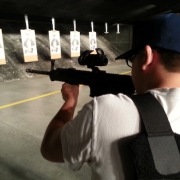



We had/have to qual every other month. Even serial numbers one month, odd serial numbers the next. LAPD
My dad taught my brother and me how to shoot, but we only practiced with .22 pistols. I assume police practice is on firearms they will be using, not “Saturday night specials.” Must be a certain amount of “kick” to get used to.